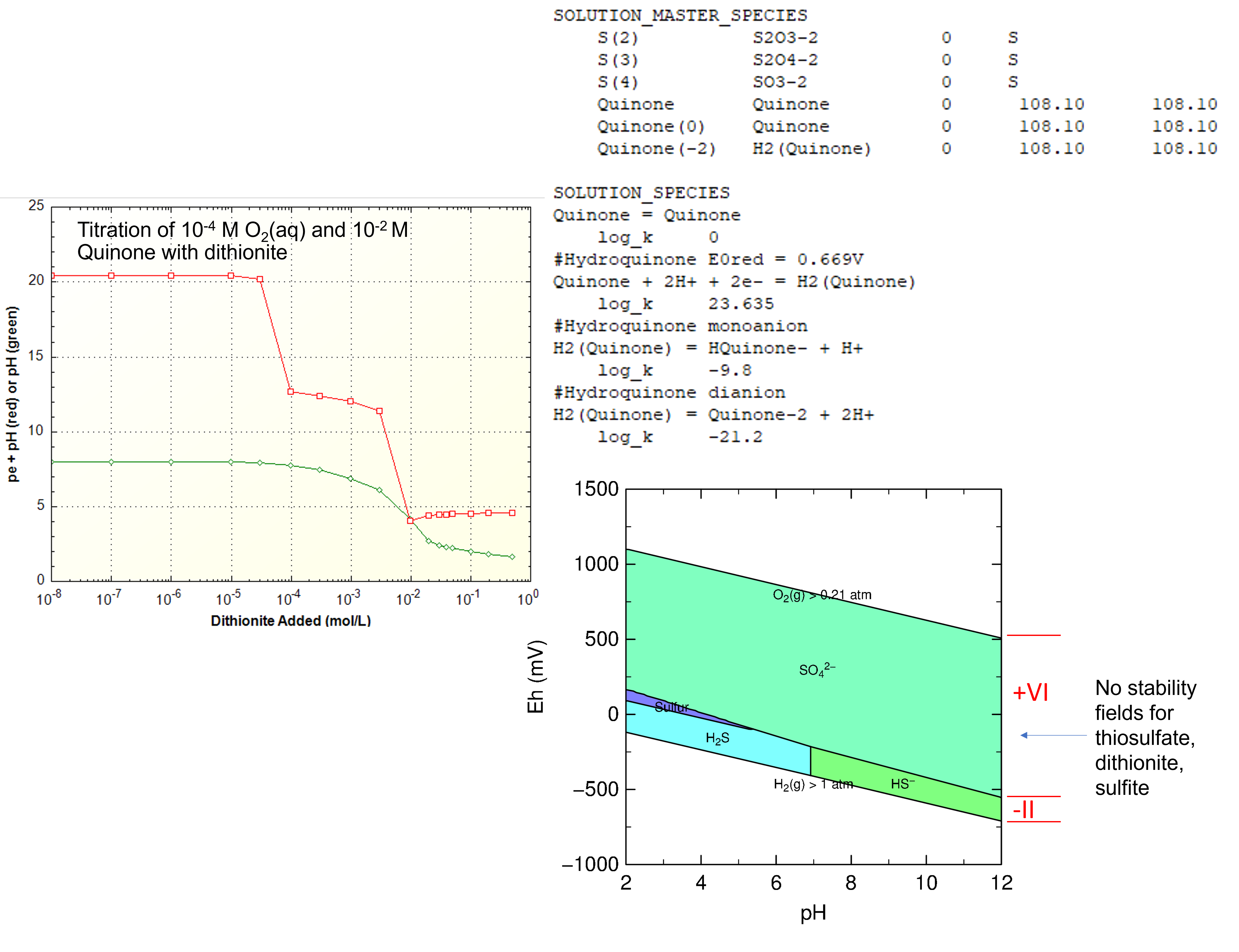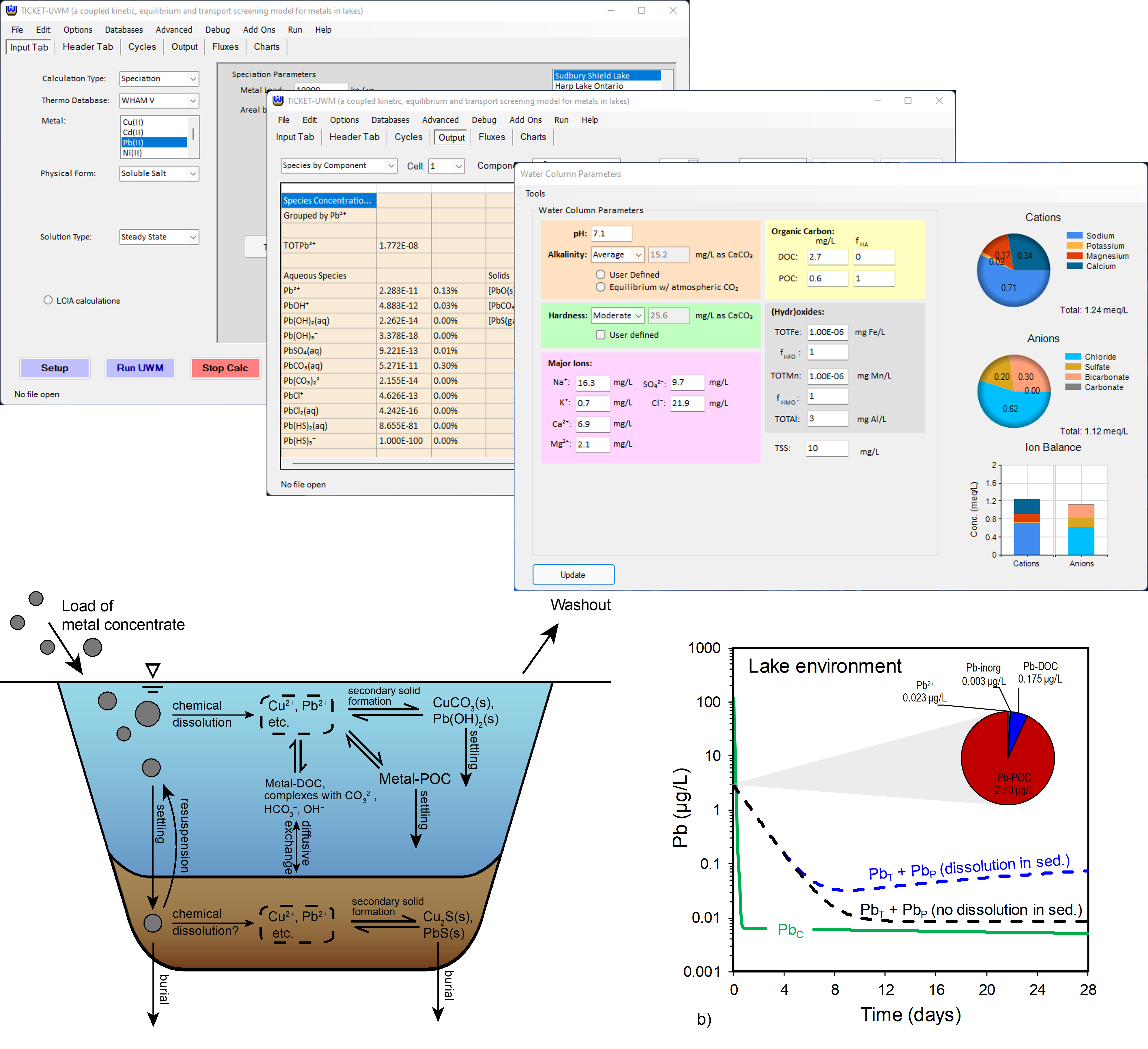Modeling
Mathematical modeling of environmental systems is at the core of Mutch Associates services . . .
This quantitative method of assessing and predicting key environmental processes is applied across all environmental compartments: air, soil, surface water groundwater, and sediment. Through modeling, we provide our clients with sound solutions supported with theory and informed by experience all with the efficiency afforded by state-of-the-art computers and software packages. Our main modeling practice areas are as follows:
- Groundwater flow modeling
- Design of groundwater extraction systems
- Capture zone analysis
- Particle track analysis
- Groundwater solute transport modeling
- Predictions of plume arrival at receptors such as extraction wells and monitoring wells
- Establishment of environmental liability by identifying potential contributors of contamination to groundwater
- Calculation of mass flux to surface water bodies
- Groundwater reactive transport modeling
- Simulation of precipitation and degradation reactions in the unsaturated and saturated zone
- Simulation of monitored natural attenuation (MNA)
- Modeling and design of in-situ treatment systems
- Optimization and design of ISCO and ISCR systems
- Optimization and design of enhanced in-situ biodegradation (EISB)
- Geochemical speciation and reaction modeling
- Use of PHREEQC, PHAST, and PHT3D to model geochemical reactions and attenuation in the subsurface
- Modeling to support cost allocation/recovery
- Allocation mass balance models to support cost recovery at sites involving multiple parties
- Peer review of other models
- Review of model code and reports prepared by other consultants
- Working in collaboration with other modeling groups
- Modeling the transport, fate, and ecological effects of metals and other toxic compounds in surface water, sediments, and groundwater
- Development and use of partitioning and ecotoxicology models such as WHAM, Biotic Ligand Model, and TICKET
- Use of CapSim to support sediment capping remedies
- Modeling of soil vapor extraction (SVE) systems
- Design and optimization of SVE systems through the use of 3-D modeling
Groundwater Flow Modeling
A groundwater flow model is a mathematical representation of groundwater flow through a hydrogeologic system, which is composed of porous media and/or fractured rock.
We use state of the art tools to develop conceptual site models, numerical groundwater flow models, and to visualize and post-process results to provide answers to clients.
The tools we use:
MODFLOW – USGS code for describing groundwater flow.
GMS, Visual MODFLOW, Groundwater Vistas – Graphical user interfaces for model development and visualization of results.
GIS and R – Used for pre-processing input and post-processing results using proprietary workflows and scripts.
Applications:
Design of groundwater extraction systems – 3D groundwater models can generate capture zones for complex hydrogeologic systems.
Particle track analysis – particle tracks can be used to determine groundwater flow paths and travel times.
Simulating response of the aquifer under hypothetical conditions – Used for determining the effect of groundwater extraction or injection on the water table or potentiometric surface.
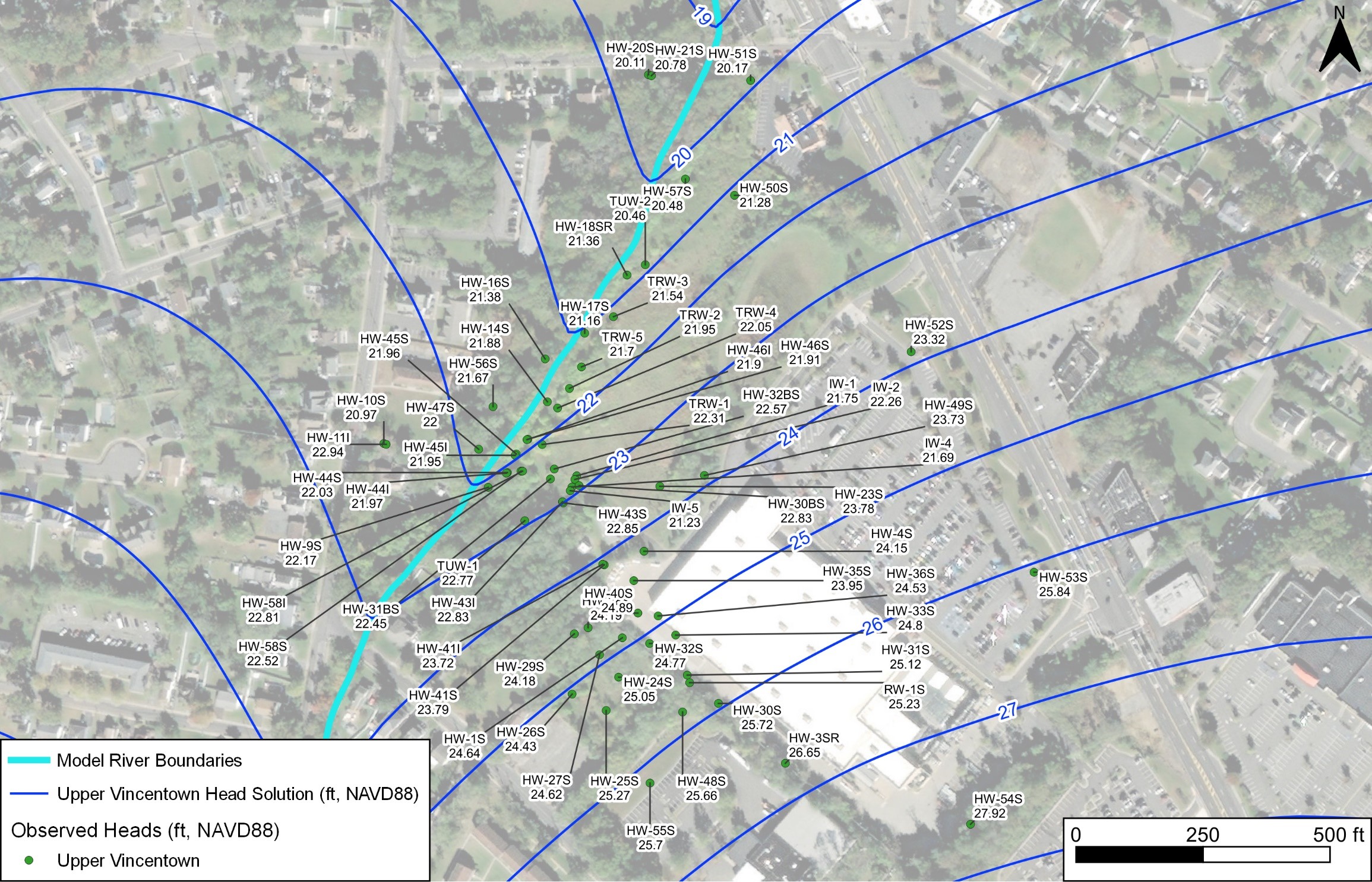
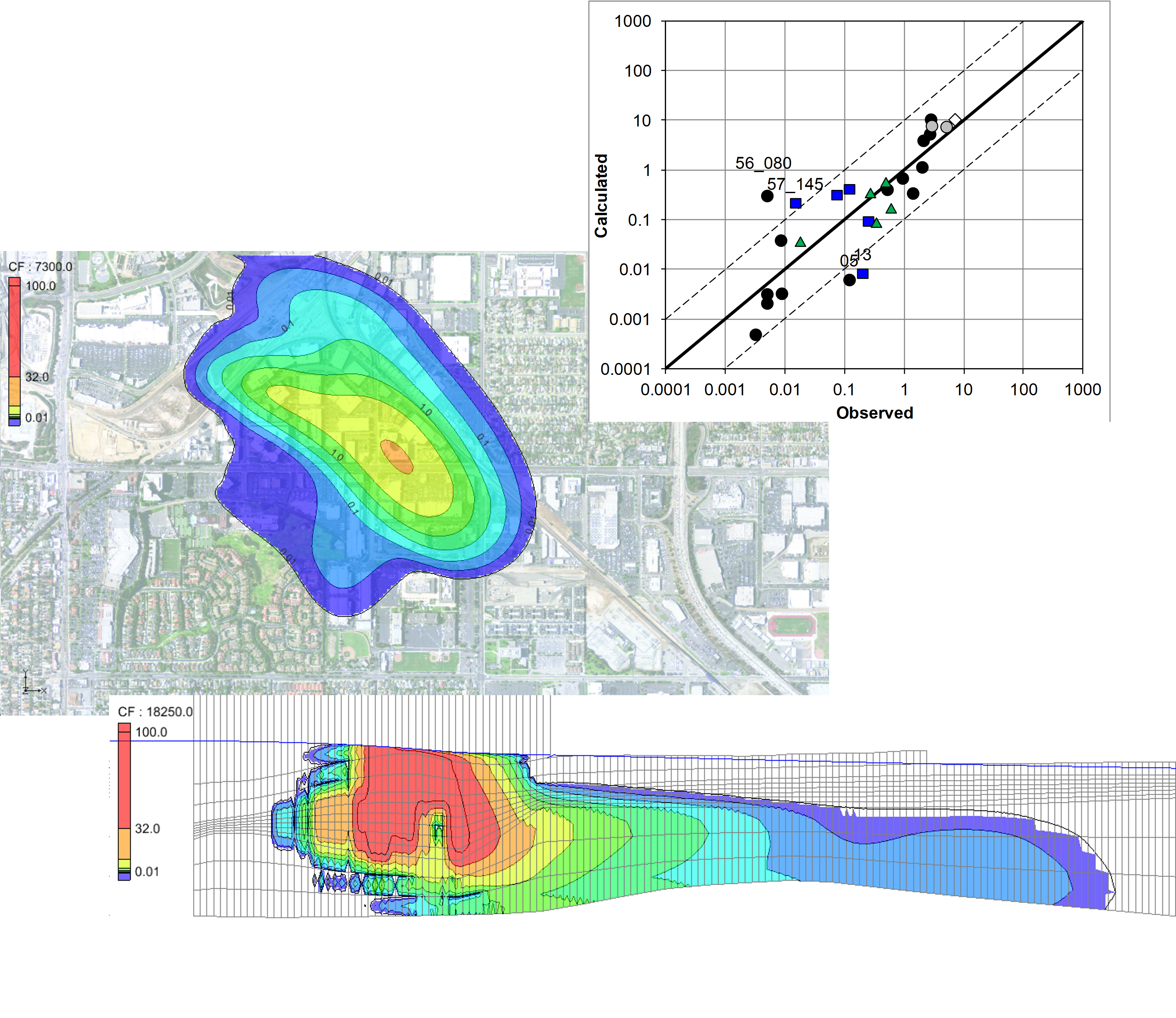
Groundwater Solute Transport Modeling
Groundwater solute transport models are different from flow models in that they track chemical mass (i.e. concentration) throughout an environmental system. These models are useful to assess and quantify contaminant precipitation, absorption and migration in subsurface media. Selecting accurate and efficient models for a new problem can be a challenging task.
The tools we use:
MODFLOW + MT3D – MODFLOW handles the groundwater flow while MT3D handles the solute transport.
SEAWAT – SEAWAT is a generic MODFLOW/MT3DMS-based computer program designed to simulate three-dimensional variable-density groundwater flow coupled with multi-species solute and heat transport. https://www.usgs.gov/software/seawat-computer-program-simulation-three-dimensional-variable-density-ground-water-flow
GIS and R – Used for pre-processing input and post-processing results using proprietary workflows and scripts.
Applications:
Groundwater resource management – Solute transport models can be used to make predictions of plume arrival at receptors such as extraction wells.
Environmental Liability – Solute transport models can be used to identify potential contributors of contamination to groundwater.
Mass flux to surface water bodies – when groundwater discharges to surface water, solute transport models can be used to quantify the effect on surface water quality.
Groundwater Reactive Transport Modeling
What sets reactive transport modeling apart from solute transport modeling? In reactive transport, chemicals are allowed to partition to soil, degrade into daughter products, or react with other chemicals in the model. This opens up new doors for modeling complex environmental systems. There are relatively few consulting firms that can perform this type of modeling. We have extensive experience in developing, calibrating and running reactive transport modeling codes.
The tools we use:
MODFLOW + MT3D-USGS or RT3D – MT3D-USGS and RT3D are solute transport codes that can simulate partitioning to solids, simple first-order degradation or more complex parent to daughter reactions.
Custom Reaction Packages – When off-the-shelf modeling packages do not have the ability to simulate what is needed, we write our own custom reaction packages that describe the detailed chemistry.
Applications:
Permeable Reactive Barriers – Reactive transport modeling can simulate performance of PRBs and estimate beneficial effect on downgradient receptors such as extraction wells and receiving water bodies.
Monitored Natural Attenuation – Modeling of contaminant degradation and production of daughter products provides an opportunity to evaluate monitored natural attenuation (MNA) in a robust way.
Modeling In-Situ Treatment – Reactive transport modeling provides opportunities to design and optimize in-situ treatment systems – more on this below.
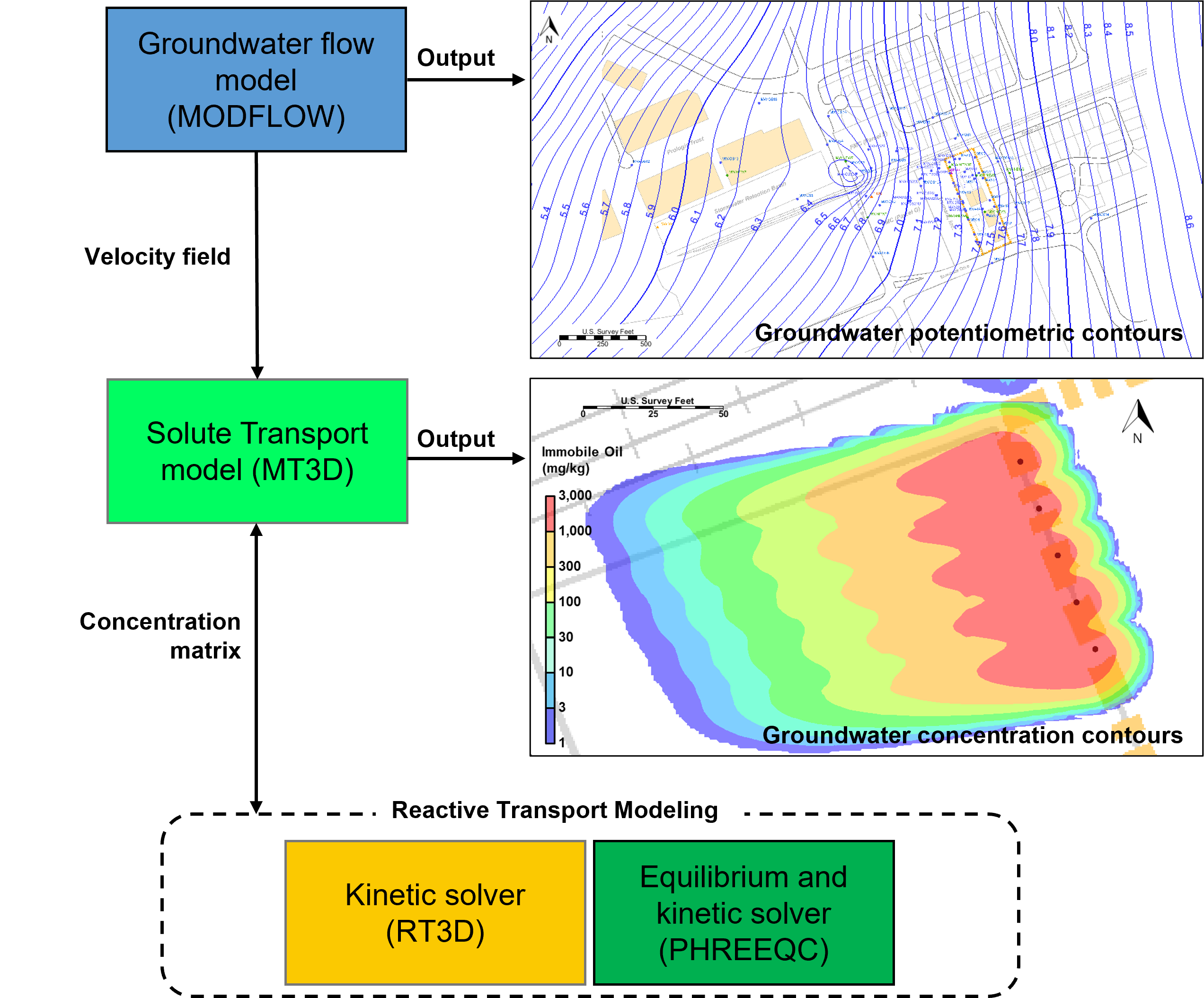
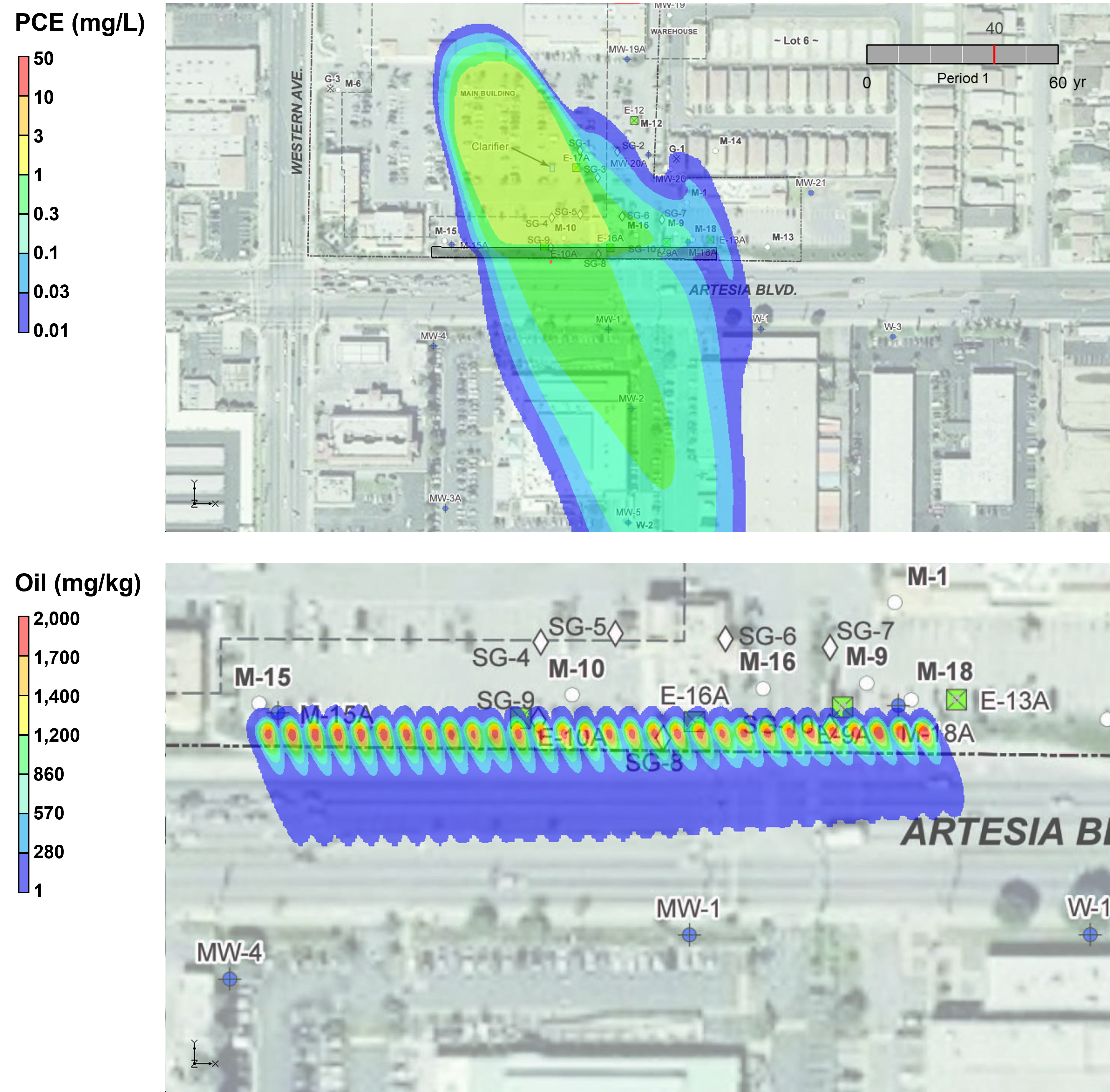
Modeling & Design of In-situ Treatment Systems
Our company has been at the forefront of developing modeling approaches for in-situ treatment of groundwater source areas and plumes. We have developed our own transport codes to model interaction of chemical oxidants, chemical reductants, carbon substrates and activated carbon in the subsurface. This allows us to help our clients select the correct remedial approach for complex sites and to optimize injection strategies and designs.
The tools we use:
Custom transport codes – We have developed custom transport codes that simulates reaction of strong oxidants (ISCO), strong reductants (ISCR), carbon substrates/electron donors, and activated carbon. Coupled with a site groundwater flow model, these codes allow us to simulate the performance of these technologies which help design engineers “get it right the first time.”
Applications:
In-Situ Chemical Oxidation (ISCO) – Injection of oxidants such as permanganate, persulfate, and catalyzed hydrogen peroxide, and their reactions with the soil (natural oxidant demand) and target chemical compounds. ISCO can be effective at degrading chlorinated solvents such PCE, TCE, DCE and vinyl chloride.
In-Situ Chemical Reduction (ISCR) – Injection of oxidants such as calcium polysulfide, ferrous iron and sodium dithionite and their reactions with the soil (natural reductant demand) and target chemical compounds. ISCR can be effective at degrading/immobilizing hexavalent chromium, inorganic arsenic and mercury, and specific munitions compounds.
Enhanced In-Situ Biodegradation (EISB) – Injection of carbon susbstrates/electron donors to degrade target organic compounds.
Geochemical Speciation and Reaction Modeling
Geochemical speciation and reaction modeling refers to calculations that are performed to better understand how chemicals interact with their environment. These style of calculations often involve numerous chemical reactions, some of which are considered to be at equilibrium.
We use state of the art tools to perform these calculations including publicly available codes such as PHREEQC, PhreePlot and the ODE solver packages in R, or our own codes such as TICKET and TICKET-UWM.
The tools we use:
PHREEQC – USGS code for performing geochemical calculations including speciation and saturation-index calculations, batch-reaction and one-dimensional (1D) transport calculations with reversible and irreversible reactions, which include aqueous, mineral, gas, solid-solution, surface-complexation, and ion-exchange equilibria, kinetically controlled reactions, mixing of solutions, and pressure and temperature changes. https://www.usgs.gov/software/phreeqc-version-3
TICKET – Short for Tableau Input Coupled Kinetic Equilibrium Transport is a general-purpose, multispecies reactive transport model that is based on the tableau structure in MINEQL. The model can be used in solving problems from simple chemical equilibrium calculations for batch systems to complex one-dimensional, reactive transport computations for surface water, groundwater, and water treatment systems. https://pubs.acs.org/doi/10.1021/es0625071
TICKET-UWM –Based on the TICKET framework, this is a screening model for assessing potential environmental risks associated with the release of metals into lakes. The model is based on a fully implicit, one-step solution algorithm that allows for simultaneous consideration of dissolved and particulate phase transport; metal complexation to organic matter and inorganic ligands; precipitation of metal hydroxides, carbonates, and sulfides; competitive interactions of metals and major cations with biotic ligands; a simplified description of biogeochemical cycling of organic carbon and sulfur; and dissolution kinetics for metal powders, massives, and other solid forms. https://setac.onlinelibrary.wiley.com/doi/abs/10.1002/etc.518
Applications:
Design of groundwater extraction systems – 3D groundwater models can generate capture zones for complex hydrogeologic systems.
Particle track analysis – particle tracks can be used to determine groundwater flow paths and travel times.
Simulating response of the aquifer under hypothetical conditions – Used for determining the effect of groundwater extraction or injection on the water table or potentiometric surface.
